What is color?
Color properties
Color Schemes
by JuliannaKunstler.com
What is color?
Color properties
Color Schemes
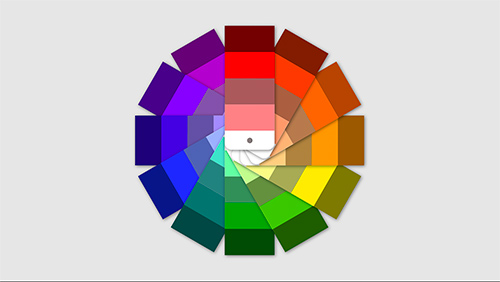
Color is the most expressive element of art.
What is “color”?
Color is not something you can feel, smell, taste, or touch….
It’s the way you see light.
In order to see color - we need light.

Color is the way we see light refracted through a prism….
Refracted light creates a spectrum, prism breaks a white beam of light into 6 colors:
Red, orange, yellow, green, blue, and purple.

Color is also light that is reflected from a surface.
Different surfaces reflect and absorb different light rays.
White surface will reflect all light rays
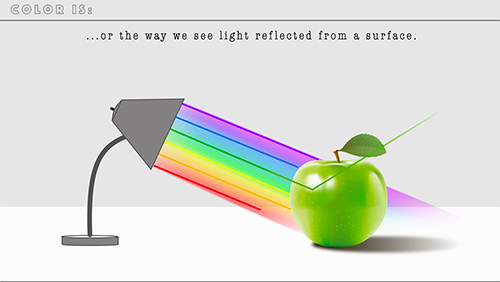
For example, a green apple would reflect only green light and absorb all others.
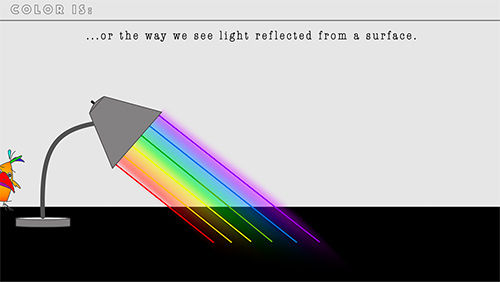
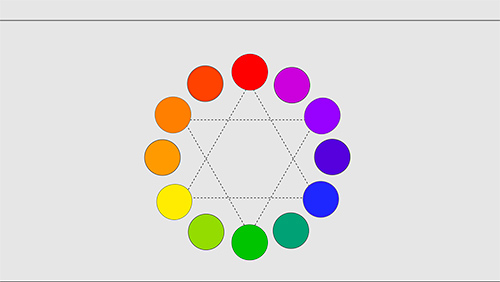
Colors are arranged in a particular order in spectrum,
When they are arranged in a circle - they create a color wheel.
So Color wheel is the arrangement of colors in spectrum.
3 primary colors are evenly spaced and create a triangle.
3 secondary colors are placed between the 2 primaries.
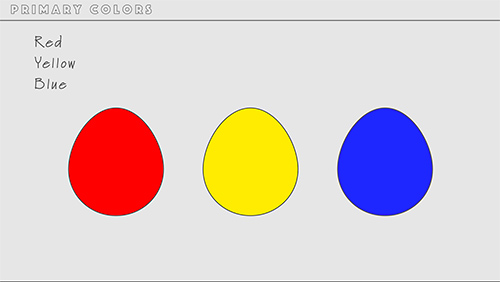
There are 3 colors that are considered as primary.
Red
Yellow
And blue
These 3 colors cannot be made by mixing other colors, but any other color can be created by mixing primary colors.


Secondary color is a color created by mixing 2 primary colors.
If you mix yellow and red - you will get an Orange color.
Orange is your secondary color, because it is created by mixing 2 primaries.
Yellow and Blue will create green
Green is you next secondary color.
Finally, by mixing red and blue you will get purple.
Here are your 3 secondary colors:
Orange
Green
And purple.
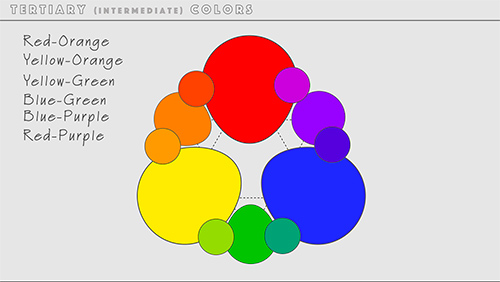
If we mix a primary and a secondary color - we will get a tertiary (or intermediate) color.
They all have double names:
Yellow-green
And blue-green
Yellow orange
And red-orange
Red-purple
And blue purple
A total of 6 colors.

Every color has 3 properties that can be used to describe it:
Hue - is the actual name of a color (or a color family)
This bird is orange
Orange - is a hue, and us used to describe a pure color.
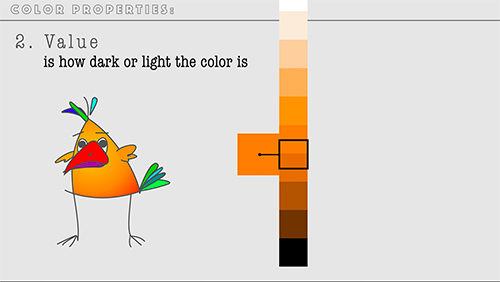
We use value to describe color’s lightness or darkness.
The bird is a medium orange.
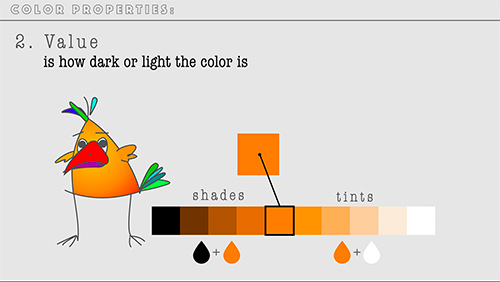
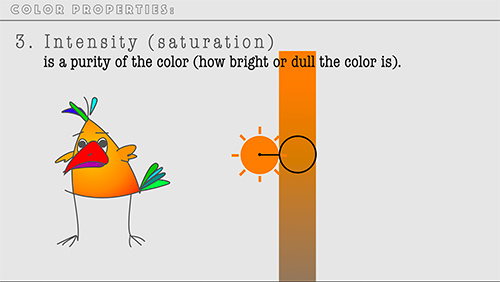
Intensity or saturation - is another color property.
It describes how bright (pure) or dull a color is.
This bird is bright orange.
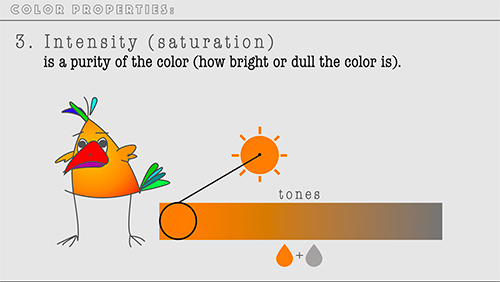
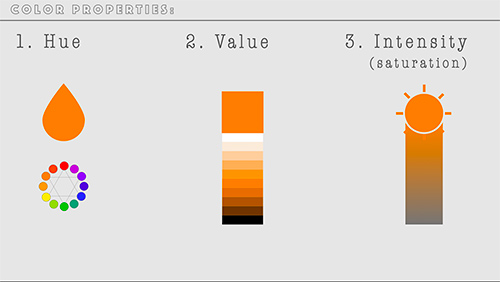
In graphic design, we use the same parameters to specify a color:
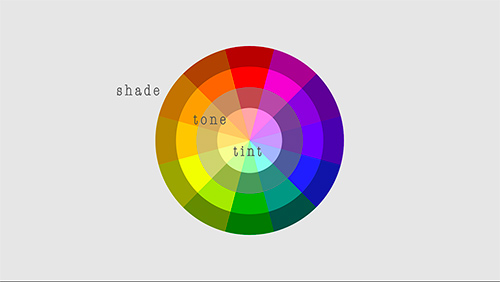
There are specific terms that artists use when describing different color variations:
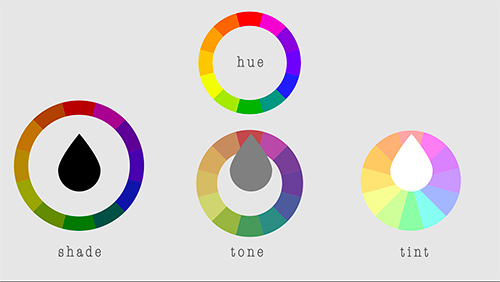
Hue - is a pure color, the brightest possible color intensity.
If you add black to a hue - you will get a color shade.
A hue and Grey gives you a color tone.
Mixing a hue with white is called a color tint.
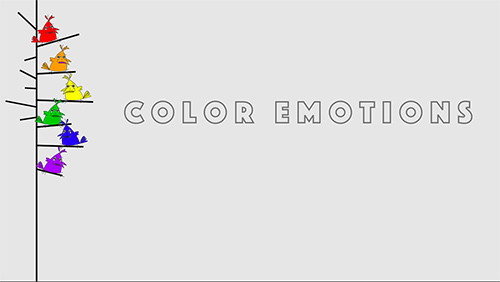
Color is the most emotional element of art. Different colors evoke different responses in the viewer.
The response is based....
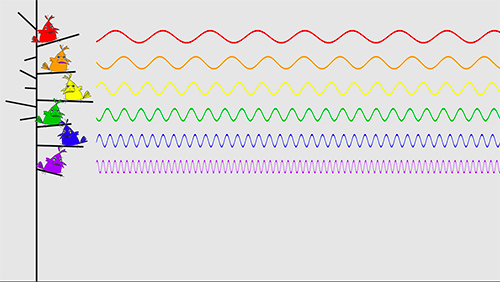
1. partly on physics (color’s wave length)

2. psychology

3. and partly on cultural symbols and traditions.

White is a "total reflection" color. It reflects the full spectrum into our eyes. White is often a strain to look at.
It symbolizes purity, truth, innocence, and light.
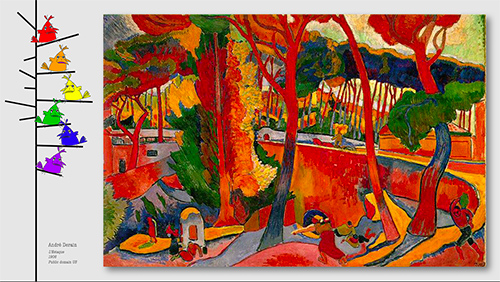
Being the longest wavelength, red is a powerful color, it grabs your attention first. Its effect is physical - it stimulates us and raises the pulse rate.
It conveys strength, energy, excitement and warmth, but cal also express aggression and danger.

Blue is the color of serenity, sadness, reflection, trust, and coldness.
Strong blues will stimulate clear thoughts, and lighter blue will calm the mind and aid concentration.
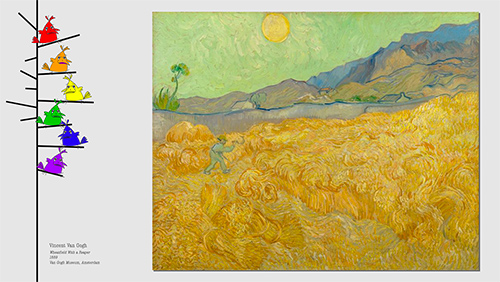
Yellow wavelength is relatively long and stimulating.
It is a strong psychological color that can bring both positive and negative reaction.
The right yellow will lift our spirits and self-esteem, it can be optimistic and friendly, warm and friendly.
Too much of yellow, or a wrong tone of it can communicate fear, depression, and anxiety.
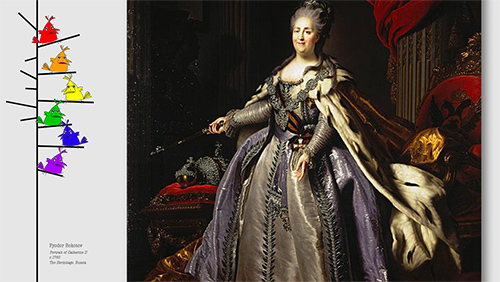
Violet (or purple) has the shortest wavelength. It is highly introvertive and spiritual. Being the last visible wavelength before the ultra-violet ray, it has associations with time, and space.
It has also associations with royalty, wealth, and luxury. It communicates the highest possible quality.
Too much purple can reverse the impression and communicate something cheap and nasty.
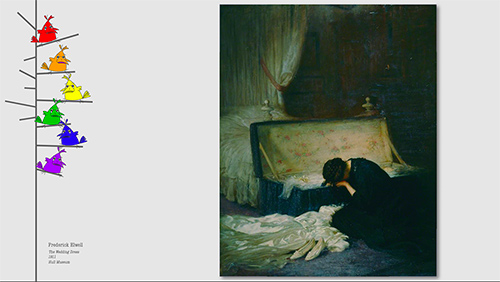
Black is a "total absorbtion" color. Black is an absence of light. No wavelengths are reflected. It absorbs all the energy coming towards you, and therefore it causes a strong psychological impact.
Black communicates sophistication and glamour, power and strength.
It can also communicate death, sadness, and fear. Black can evoke feelings of anger, drama, and even aggression.
Some of these effects are cultural. (For example the color of death in some cultures is white).